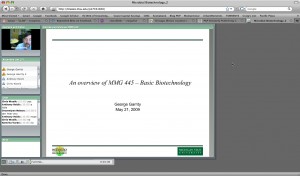Providing an Incentive: Developing Publishing Services for Researchers: The Session Blog
Presenter: Sara Fuchs, Digital Initiatives Library, Department of Scholarly Communication & Digital Services, Georgia Institute of Technology
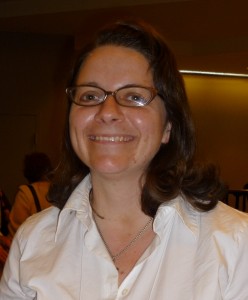
Sara Fuchs
Time: 4-5pm, July 9th, 2009
Place: SFU Harbour Centre, Sauder Industries Room 2270
———————————————————————————————
Session Overview
Background
The Georgia Tech Library Department of Scholarly Communication & Digital Services set up an institutional repository in 2004 in hopes that faculty members could self-submit. Although they had always had a repository, it was usually set up after conferences had occurred. The department later decided to provide more support and began to help faculty create, store and view their papers, especially since nobody else on campus was offering similar services. The service provides both conference and journal support, as well as the uploading of any video recordings (of lectures as well), and digital archiving on the centralized repository for Georgia Tech authored materials, known as SMARTech. Submission onto SMARTech requires that the authors grant a non-exclusive license to Georgia Tech for non-commercial uses– mainly to raise awareness about open access to graduate students and supporting scholarly collaboration. SMARTech is now one of the largest institutional repositories in the United States and 35th in the world according to the Ranking Web of World Repositories, a project by the Spanish public research body Consejo Superior de Investigaciones Científicas (CSIC).
Lessons Learned with Open Conference Systems (OCS)
OCS works well for what it is supposed to do. It was a low pressure situation for the department because there was no need to maintain the OCS software, as everything was eventually going to end up in the repository. They found that clients enjoyed using OCS much more than the normal email workflow.
However, there were still challenges. With OCS, the process of accepting and rejecting proposals was more difficult– conference calls seemed to be much easier, and there is always a time lag in uploading presentations. Another challenge surfaced while setting up the Open Repositories 2009 Conference, mainly because they were working with two different websites. It made it very difficult to collect and retrieve conference papers. The Access Services Conference was the first time the payment function of OCS was used. Again, it was difficult to synchronize across two websites and this required going through multiple steps.
Customization
Clients wanted something more slick and streamlined, and wanted to use the more interactive parts of OCS, such as giving comments directly to authors, etc. In order to do this, all .css and template files had to be modified. New headers needed to be created, as well as modification of some menus, journal layout, and downloading of specific plug-ins. This proved to be very time-consuming, and this took design changes out of the hands of journal managers/editors. That being said, clients were highly satisfied and this became a showpiece of the department’s collaboration with faculty.
Questions
(Ran out of time)
Comment: Some of the difficulty in syncing between two websites might be easier if you upload/download directly from OCS instead of another location.
Related Links
July 13, 2009 Comments Off on Providing an Incentive: Developing Publishing Services for Researchers: The Session Blog
Open Access and the Economics of Scholarly Communication: The Session Blog
Presenter: Heather Morrison, Project Co-ordinator, BC Electronic Library Network – Session abstract
Heather’s presentation was recorded. It’s available here.
Session Overview
In this session, Heather Morrison presented an overview of the economic environment in which scholarly publication currently exists, focusing her attention on potential effects of the growth of the Open Access (OA) movement on this environment.
The Macroeconomics of Scholarly Publishing
Heather began by framing her discussion with the modern definition of economics, that is, the study of our behavior and the means by which we achieve certain ends given limited resources. This was used to raise the following question: “Where is the money to help with the transition to fully OA publishing?”
The current economic situation was then explored with a description of the estimated costs of per-article publishing in the domains of science and technology. These estimates range widely from one publisher to the next;
- BMC – 1500$/article
- PLoS One – 1300$/article
- Springer Open Choice – 3000$/article
- Hindawi – 800$/article
These costs, among not-for-profit publishers, are broken down in the following way:

In the realm of highly profitable for-profit publishing, the per-article cost is broken down in the following manner (as per Heather Morrison’s research). Alarmingly, in this economic model, nearly 50% of the per-article revenue goes to profits and taxes. Perhaps most interestingly, she pointed to a number of examples where for-profit publishers charged from 6 to 7 times more for publications that were actually less cited than similar journals put out by not-for-profit publishers.

Alternative to the current model
Looking at these numbers allows an examination of costs that may be reduced through a transition to fully OA publishing and the introduction of a number of efficiencies. OA technology such as Open Journal Systems could offer the following benefits;
- reduction in the costs of coordinating the refereeing process
- elimination of typesetting and printing costs
- reduced systems and staffing costs
- elimination of authentication, hosting and troubleshooting costs
- dropping the need for copyright policing
Other less direct efficiencies introduced by the adoption of fully open-access publishing include a rethinking of the rejection process, with a reduction in the need to resubmit rejected articles to additional journals.
With these new efficiencies and cost savings, Heather suggests, libraries would have additional resources to allocate to building collections, rather than buying collections; to funding institutional repositories rather than spending on inter-library loans and to digitizing and preserving electronic collections rather than shelving print journals.
What if the subscription-based scholarly publishing industry were to collapse?
The concern has been raised by a number of publishers that the introduction of fully open access publication may threaten the viability of the current subscription-based model. Heather contends that although they are unlikely to fail any time soon, if the major publishers collapsed, there is sufficient open-access support available to help journals carry on with their publishing activities. She argues that this collapse (again, however unlikely) would provide an opportunity to rethink, renew and rebuild our publishing system.
Commentary
Not surprisingly, this presentation gave rise to a healthy amount of discussion. Questions were directed both to Heather Morrison and Frederick Friend who gave a talk on the future of scholarly publishing. The following questions were raised;
How would fully open-access publishing be cheaper than the subscription-based system? The savings are thought to come from the wresting of control of costs from the publishers into the hands of academics. In order for the savings to materialize, however, academics will need to focus on transforming several aspects of the economics of publishing.
If libraries are already struggling to cope with the rising costs of subscriptions, how can they set aside money for open-access initiatives? This will likely require a multi-faceted approach. Librarians will need to set priorities along with researchers in order to make decisions about which subscriptions are most needed. If needed, they may also need to consider canceling “one big deal” in order to leave room for OA funding.
Related links
Imaginary Journal of Poetic Economics – Heather Morrison’s BlogCanadian Libraries Association Position Statement on Open Access Scholarly Communication for Librarians – Heather’s new book
References
Morrison, H. (2009). Open access and the economics of scholarly communication. PKP Scholarly Publishing Conference 2009. Retrieved 2009-07-08, from http://pkp.sfu.ca/ocs/pkp/index.php/pkp2009/pkp2009/paper/view/136
July 11, 2009 Comments Off on Open Access and the Economics of Scholarly Communication: The Session Blog
Open Journal Systems (OJS) software as used by African Journals Online (AJOL) – The Session Blog
July 9, 2009 at 10:30 a.m. SFU Harbour Centre (remote session). Rm. 7000
Susan Murray (Source)
Background
Ms. Susan Murray is a proactive individual working with the African Journals Online (AJOL), a non-profit organization, as the executive director for over two years. Her she academic background is on development economics and she is focused on opening access to information in developing countries such as Africa.
Session Overview
Ms. Murray’s session is a journey from the 1990s to present day focusing on the progression of access to African Journals Online (AJOL) (Session Abstract). She begins with an overview of the journal, followed by the users and stakeholders involved, which she ties in to a comparison of the old and new systems along with the future outlook for AJOL, and finally she concludes the presentation with a business plan and parting remarks.
(1) Overview of AJOL
Ms. Susan Murray started the presentation with the following quote from Mamphela Ramphele :
“There is no way we can succeed in the eradication of poverty if the developing world is not part of knowledge creation, its dissemination and utilization to promote innovation. Higher education is a critical factor in making this possible and must be part of any development strategy.”
– Mamphela Ramphele (2000)
Ms. Murray goes on to explain the importance of higher education and policies governing such institutes. She indicates that there is a long way to go in terms of sharing and transferring knowledge to the developing worlds, however it must be done and there is harm in not doing so as innovation cannot advance in these developing countries. In Africa the process of dissemination has already begun with AJOL hoping to increase its visibility and accessibility of open journal sources. Currently, AJOL has 350 titles with over 40000 articles (and free metadata) which are a combination of open-access (OA) and subscription based titles that cover majority of the academic spectrum. Ms. Murray pointed out that some of the titles are not found online anywhere else but on AJOL! This shows the exclusivity of some of the titles that are secured by AJOL. In order to join AJOL, Ms. Murray listed the following criteria which must be adhered to – this mostly encourages more of the ‘fringe’ journals to upload their documents for increased visibility:
- Must be original research
- Needs to be peer-reviewed
- All content must be given to AJOL
- Permission must be granted to AJOL
- Content must be published in the African continent
(2) The Stakeholders
It is fascinating to know that as of today, Ms. Murray highlighted the 26 African countries with journals on AJOL (See Figure 1a). Figure 1b is a ‘Google Maps mashup’ which highlights the actual journals (with corresponding links) in a particular country. Ms. Murray exclaimed this is an impressive display along with the number of visits by other continents as illustrated in Figure 2. Africa had the highest percentage of visitors at 32% of the total population who accessed the site, while North America, Asia, and Europe had 23%, 21%, and 20% respectively.
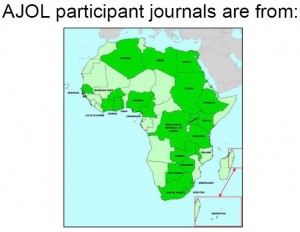
Figure 1a: Distribution of Journals in Africa (used with permission from Ms. Murray)
View Map of Africa in a larger map
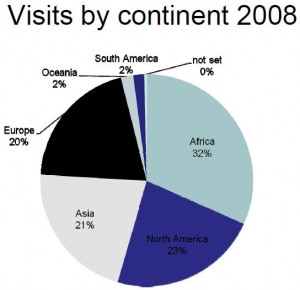
Figure 2: Visits by continent (used with permission from Ms. S. Murray)
(3) Comparison of old and new systems
After the overview and elaboration of the users and stakeholders of AJOL, Ms. Murray went into the details of the AJOL on OJS 2.2.2. She expressed the benefits of such a partnership with PKP led to better upgrading of the system. She found that more advanced versions could also be complied and were easier to upload which allowed for more capabilities in the platform that were not possible before. Figure 3 shows flowchart of the software and resources used ending with final product of the Open Journal Systems coded through the PHP scripting language using MySQL as the database management tool in the APACHE web browser run from the Linux operating system.
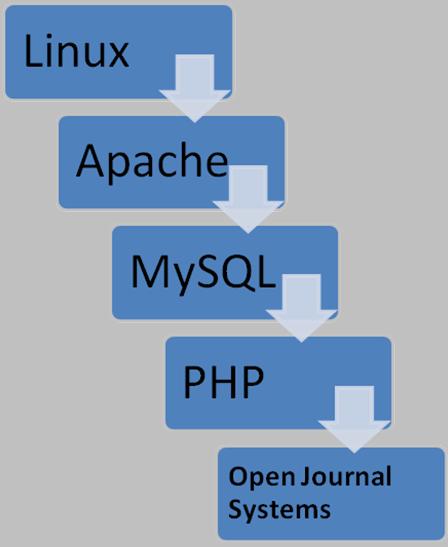
Figure 3: Software and Resources (created by Pam Gill)
A comparison of the new and old system is shown in Figure 4. The new approach is useful for all parties involved and is an excellent search tool with a new look and feel. Currently, as of July 2009, journals now manage their own AJOL pages in terms of the workflow management. In the future, Ms. Murray envisions that journals will be able to host their own versions of OJS on the PKP harvester which acts as a metadata aggregator. The newer versions will include a statistics package and offline plug-ins when connectivity is interrupted. The offline plug-in option will be crucial for users living in remote areas. Eventually, Ms. Murray envisions all journals being independent and managing their own pages.
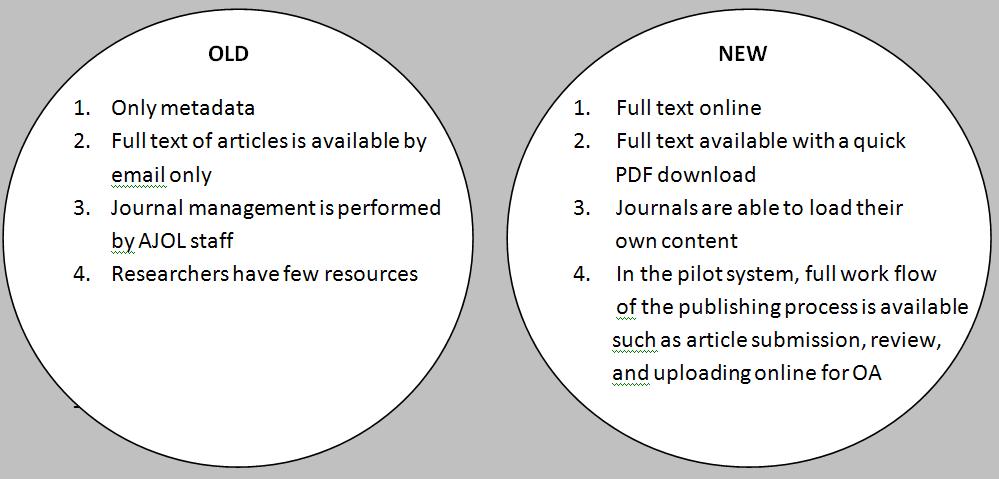
Figure 4: Comparison Chart of Old and New Systems (created by Pam Gill)
To conclude her presentation, Ms. Murray placed great emphasis on the need for the flow of global information from the North to the South (Evans and Reimer, 2009). She stressed the implementation of a new business plan that would allow journals to consider OA as a more viable possibility via AJOL/PKP. The full OJS functionality on AJOL has already made a huge difference as discussed earlier as open source software (OSS) has matured considerably. To summarize Ms. Murray ended her presentation one two key points to promote and continue the dissemination of literature in developing countries. First she brought forth the importance of carefully selecting the best tool that will take into account the needs of the users. Next, she advised to carefully align yourself with partners that you trust and who will support your initiatives for the right reasons. The following quote from Ms. Susan Murray herself summarizes these points:
“Relationships and communication are still the drivers of success, the technological tools are just the vehicle.”
– Susan Murray (2009)
This quote from Ms. Murray is used to illustrate that the technology can help propel the dissemination process in varying capacities. Technology depends on the specifications and limitations of the hardware and software. Yet, at the end of the day, relationships with others are the most important in terms of communicating, working collaboratively sharing ideas, which will ultimately lead to the success (or failure) of your goals and aspirations.
Questions from the audience asked at Ms. Murray’s session:
Question: Is AJOL published in other languages (referring to Figure 1 of African map from Susan’s PowerPoint slide)? Does AJOL have plans to bring more non-English journals to the portal?
Answer: Yes, we are hoping to introduce this to Francophone countries by starting the process of translating to French. So there will be an English/French option. We have a few journals published in Portuguese, Arabic. If we have a journal that is online (and space is NOT a problem) then we can publish in a local, indigenous and international language. Then at the same time research can be read by the local community and broadly by the rest of the world. This will increase readership and the journal will have met the needs to satisfy the best of both worlds.
Related Links
Conference attended by Susan Murray
Software/Sites
- African Journals Online
- OJS 2.2.2 Download
- PKP Open Archives Harvester: free metadata indexing system
References
Evans, J.A, & Reimer, J. (2009). Open Access and Global Participation in Science . Science. 323, 1025
Murray, S. (2009). Open journal systems (OJS) software as used by African journals online (AJOL). PKP Scholarly Publishing Conference 2009. Retrieved 2009-07-09, from http://pkp.sfu.ca/ocs/pkp/index.php/pkp2009/pkp2009/paper/view/216
July 11, 2009 1 Comment
Critical Mass is Critical – Creating Sustainable Scholarly Communication: The Session Blog
When: Friday, July 10, 2009 2pm – 3pm
Room: Main Concourse – Fletcher Challenge Room 1900
Presenter: Gregg Gordon
Gregg Gordon is President and CEO of the Social Science Research Network (SSRN). SSRN is a digital repository that has close to 100,000 full-text documents. The network allows readers access to full text and articles without any changes, but no access to the meta data attached to the articles. It has received approximately 30 million downloads so far. SSRN is part of the social networking community through a blog, Facebook, and Twitter.
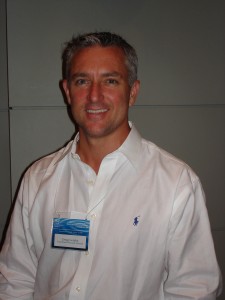
Gregg Gordon (Source: Photo taken by Helen Szeto)
Session Overview:
Gordon’s presentation is about the growing amount of scholarly information that is out there and the connections that can be made with it. He starts off by defining the term “critical mass.” Critical mass is the minimum amount of something required to start or maintain a venture. Gordon believes that there is an endless abundance of information out there. There is a lot of research, but he asks the question, how can academics sort through everything? The biggest complaint received at the SSRN is that there is too much information with over 1000 journals available on the network.

(Source: slide courtesy of Gregg Gordon)
Gordon explains how the scholarship of information is growing. The Open Journal System (OJS) has enabled the creation of over 3000 OJS journals, which means over 3000 new publishers. Every 20 years, the amount of scholarly journals available is doubled. Ninety percent of all scientists are alive today, which means they are still making contributions to the scholarly world. The amount of research available increases because readers are getting access to earlier research stages. In the SSRN, 13% of the citations are towards working papers. Drafts are being referenced. Interdisciplinary classifications are also increasing research relevance. Academics are able to see the content from a broader amount of subjects.

(Source: slide courtesy of Gregg Gordon)

Gregg Gordon Presentation (Source: Photo taken by Helen Szeto)
Gordon says that traditional publishing models are slowing innovation. On the other hand, clusters of information are increasing innovation. Information is being connected to make more meaningful relationships. People are growing up with access to information and therefore understand that information needs to be free. Depositories are being built, but not used widely. Greg offers a formula to get people to the depositories. “C(onversation) + C(onnections) = C(ommunity)” Communities will form when people are talking about the information out there and making connections with the pieces. Gordon says as you find more content, you determine what is important to you. The community also has to provide many means to access the information. Content is being accessed through the web and various social networking sites. Wireless allows information to be accessible anywhere and everywhere.

Clusters and Connections of Relevant Information (Source: slide courtesy of Gregg Gordon)
In Gordon’s search trend analysis, he has discovered that people are looking at blogs and wikis to find what is important to them. Journal use has declined a little bit in trend. Gordon makes a reference to a NY Times article regarding Google search being replaced by YouTube in an elementary school.
The overall underlying message is that communities are key to sharing ideas and making relevant connections in your field of study.
Session Analysis:
Gordon makes good use of visual slides to display his ideas of growing information and the communities that emerge from the connections being made. By visually being able to see the clusters of information and the connections they form, we have a better understanding of their impact. Gordon has shown that repositories will be more efficiently used when the information is clustered and networks are created. We learn that communication is vital in grouping relevant research together. People need to have discussions and to share their ideas in the communities. Gordon is showing us how we can make better use of the information mass that is already out there.
Session Questions and Answers:
1) Why is there more structure in the scholarly publishing of hard sciences than in the social sciences?
Reply: Gordon compares scientific, technical and medical (STM) publishing and social sciences to a rifle shot and a shotgun approach. STM is like a rifle shot where information is very cloistered. “Social sciences have a shotgun approach because you want to get your information out there by getting published. In the hard sciences, you are writing to fund your lab, while in the social sciences; you are writing to build your lab.” There are two clear differences in submission approaches. “Some academics do not want to submit anything until it is it ready, while others will send out a proposal to put their stake out there.”
2) Gordon also comments that there needs to be a person checking the data to ensure that quality is there.
Related Links
- Social Science Research Network (SSRN)
- PKP 2007 – Creating Scholarly Communities and Fostering Innovation (presentation by Gregg Gordon)
- Critical Mass is Critical, Building Authority in a Changing World (under Feb 6, 2009 – video of G. Gordon’s presentation)
- Bepress: The Other Legal Repository
- An Interview with SSRN’s Gregg Gordon
July 10, 2009 Comments Off on Critical Mass is Critical – Creating Sustainable Scholarly Communication: The Session Blog
Establishing a New Open Access Journal in Africa: The Case Study of the African Journal of Primary Health Care & Family Medicine (PHCFM): The Session Blog
Presenter: Pierre de Villiers
July 10th, 2009 at 2:00 p.m

(Used with permission from Pierre de Villiers)
Webstream
Background info
As a new discipline to Africa, Family Medicine needed a forum to communicate scholarly work throughout Africa. Ten countries in the neighbouring area of the Sub-Sahara joined together and through academic support and affiliation with well known academic associations started a new journal, The African Journal of Primary Health Care & Family Medicine (PHCFM). Their mandate was to ensure 20-30 publications were accepted and published per year. It delves into family medicine for the primary health care giver using African context. They use Open Journal Systems, and Creative Commons licence to ensure accessibility over the ten participating countries. They have multiple citations in Google scholar. The editor-in-chief is Professor Gboyega A Ogunbanjo from the University of Limpopo, South Africa. He is a specialist family physician.
The journal is mainly supported by the Flemish Inter-university Council (VLIR), a department for University Cooperation for Development, through the project VLIR-ZEIN 2006 PR320, but also has local support from Africa as well.
View Participating Partners in the new African journal, PHCFM in a larger map
Session Overview
Dr. de Villiers starts this session describing why he started this new journal. He has been the editor of the South African Academy of Family Practice/Primary Care journal (SAAFP) for the past ten years (the journal has fifty years of experience). Since that time, South Africa (SA) has made family practice into a specialty and now there is a great emphasis on primary health, care not only in SA but all over Africa.
He recognized many problems in communicating the knowledge of Family Practice in Africa:
- There were no full African journals at the time
- Most research was published in non-African-run journals
- It was difficult for African scholars to get published
SAAFP went online in 2005 as the first journal in Africa to do so. Open access to the journal started in 2006 and saw a dramatic effect on increased submissions to this journal as well as those articles sent to NEJM. Submissions were too numerous by far to publish solely in SAAFP and the need for a new journal was finally realized.
Once Dr. de Villiers decided to start this journal (PHCFM), he had standards he needed the journal to commit to.
- Published in English
- Peer reviewed
- Open access
- Onlne – for global visibility
- Rolling publication – articles could be published as they became available
- DOI – Crossref
- Ability to print on demand at end of every year
- Copyright – would use creative commons licencing to keep it open
- Credible Editorial board – Large African component as well as international made for highly visible editors
On November 18th, 2008, the official launch was in Kampala (picture above). Since then, the statistics on the journal have been staggering.
- Submitted 74
- Published 16
- Edited and accepted 11
- Declined 27 (36%)
- In-review 15
- Days-to-review 55, and days-to-publication 126
People are reading this journal, mostly from SA but a strong component are from Nigeria and the rest of the developing world. The website has registered over 2000 unique visitors this year, with 3.42 visits/person. People like what they see and 77% of people come back through internet bookmarks.
When Dr. de Villiers asked, what did we do right? He believes he had many good things working for him:
- Credibility of his editorial board – this gives the author/reader trust to submit articles as well as to use the journal as a reference tool
- Quality of editorial process (maybe too good with 36% rejection rate?)
- Sponsorship of funding and support
- OJS/online availablity
- Professional publishing service
This journal was endorsed by the World Association of Family Doctors (WONCA) at their 2009 conference and has been indexed in African Index Medicus. African Journals on Line (AJOL) will be accepting the journal this year, and they hope to be indexed in PubMed next year.
He states some of the challenges he has seen as well as anticipates seeing are:
- Need for continued funding (>5 years)
- High rejection rate
- Author support may be needed
- Additional funding to publish more articles (costs 500 euros per article)
When talking about the future of what he thinks the journal needs to do to stay visible and expand:
- Accreditation – needed from the Department of Education in order to get more funding (their application is being considered now)
- Continuing Professional Development credits needed
- XML publishing (under review)
- Thesis abstracts will start to be published July 2009
- French abstracts/articles will be started to help readership
Related Links
July 10, 2009 2 Comments
From Pedagogy to Androgogy: Using OJS to Immerse Students in Peer-Review Publishing: The Session Blog
Original Abstract Title: An Online, Open Access, Student-Authored and Peer-Reviewed eJournal in Biotechnology
Presenter: George M. Garrity
July 10th, 2009 at 9:30 a.m.
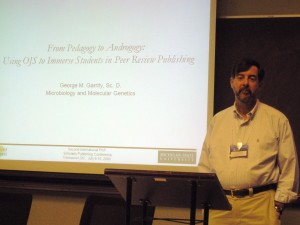
(Used with permission from George Garrity)
Background info
A course (MMG 445 Basic Biotechnology) taught at Michigan State University by George Garrity has been a leader in student open access knowledge publication. The curriculum ensures its students learn the rigorous method of peer review in their field by becoming both authors and reviewers. The course and website follow Creative Commons licensing and pay particular attention to intellectual property. The students hope to be published at the end of this course after surviving the said scientific methods of journal editing and learning about biotechnology to boot.
Session Overview
The session starts with Professor Garrity describing a 20-year old course description that claims to deliver thoroughly out-of-date biotechnology topics and methods. You would think this would mean a zero percent class registration, but in contrast the class has been increasing in size every year and the university has placed a cap at 50 students! Word of mouth has ensured that this important course for all students is continued. Why is this course important you ask? Garrity goes on to explain that there are 5 essential elements students need to possess and are rarely taught in school:
- Curiosity
- Open to new ideas
- Problem solving
- Critical reading and listening skills
- Ability to express oneself clearly (written and verbal)
He continues on to describe what happens in the real world and skills you need to possess to become successful in your field:
- work on multidisciplinary teams
- be adaptable
- ability to acquire new skills quickly.
He shows how the course has changed over the 10 past years and how the course has come from a traditional lecture based series to a now completely virtual university with all lectures given online and students able to blog/chat online with each other and professor at the same time. He has instituted a blog for students to ask questions about the given weekly lecture (and this is the class participation mark). The students do not get away with mindless, redundant questions either. They will get thrown back to the students to revise.
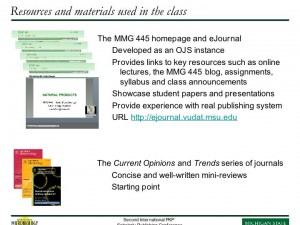
(Used with permission from George Garrity)
The course is structured into 4 assignments:
- Review paper (topic of their choice from Current Biotechnology) 30%
- Student Reviewer (4 other student papers) 30%
- Presentation of their paper 30%
- Class Participation 10%
Garrity and invited expert guest lecturers ensure that the whole process is valid and conforms to proper methodology. They also ensure that students are true to their said interests and get the work authored and reviewed in a timely fashion. The whole process has to be completed in one academic semester (13 weeks). There is a 70% acceptance rate and students are held to high standards. He relates to the class the importance of publication and how the scientific community uses this process to communicate, gain recognition and as a tool of quality control.

(used with permission from George Garrity)
The student publications can be viewed online via the Open Journal System and have been thoroughly cited in Google scholar. These review article have been cited by other peer-reviewed articles multiple times, have been published by Elsevier and have been used in hiring interviews. Student Alumni have come back to class to give ringing endorsements of the reality of the class and well as to become teaching assistants or guest lecturers.
One of the biggest components is the no-tolerance policy on plagiarism which is painfully spelled out by Garrity in class and even goes on to tell the students how he will catch them. You would think this would turn students off of the idea, but he still gives examples of multiple plagiarized papers each semester.
As stated above the course goes beyond plenary sessions to include the above unique writing as well as faculty and student-generated online videos. They do this using Web 2.0 online programs (Adobe Connect Pro/Skype) which are similar to Jove (Journal of Visualised Experiments). Please see the YouTube tutorial below for an example of how Adobe Connect Pro works. These are easy to use and cheap to install in the classroom.
Questions from the audience
Most questions centred around plagiarism and how he could detect the multiple examples.
The shared techniques from simplest to complex were:
- multiple different fonts in a paper
- multiple writing styles in a paper
- undergrad level English/grammar forging into graduate level writing and then back again
- use of technically perfect writing, however strung together in such a way that it made no scientific sense
A specific technique he used centred around an “anchoring” word which is a word that shouldn’t be used commonly that appears. He places this word with three or four surrounding words in google and tries to find wrong citations or mis-citations. All evidences of plagiarism is reported back to the Academic Council and Dean.
Notable Accomplishments
The eJournal continues to increase in circulation with >92,400 downloads to date (Source).
Seven student articles have been downloaded > 2000 times and 23 papers over 1000 times (Source).
The eJournal has been chosen as the first place recipient in the 2007 MSU-AT&T Faculty-Staff Awards for Instuctional Technology.
Related Links
Scientific Writing Reference texts

July 10, 2009 1 Comment
New Ground for Research Libraries: Conference Management Systems: The Session Blog
Presenters:
- Heidi Drasbek Martinussen, System Librarian, Technical University of Denmark
- Helle Damgaard Andersen, Webmaster, IT Department for Library and Web, Copenhagen Business School
- Kirsten Suhr Jacobsen, Conference Consultant, Copenhagen Business School Library
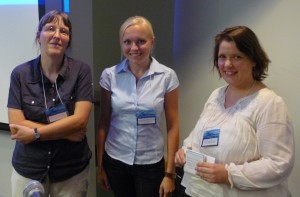
(From left to right: Helle Damgaard Andersen, Heidi Drasbek Martinussen, Kirsten Suhr Jacobsen)
Time: 2:30-3:30 pm, July 9th, 2009
Place: SFU Harbour Centre, Earl & Jennie Lohn Room 7000
———————————————————————————————
Session Overview
Beginnings
Denmark’s Electronic Research Library (DEFF) began a project in 2008 to review twenty open source and proprietary conference management systems and to test out the three that were best suited for research libraries (i.e. includes functionalities such as registration/payment, review process, etc.) This project was carried out collaboratively by the Technical University of Denmark (DTU), Aalborg University, and Copenhagen Business School (CBS); each institution was to test out seven systems, respectively.
The following diagram represents the various characteristics of the systems, such as those that only support review or registration/payment functionalities, as well as pricing – red denotes that the system was VERY EXPENSIVE.
(source)
Following the preliminary testing stages, the three institutions each chose one of their seven conference management systems, and carried out pilot projects on the selected system:
1) Proceedings Central tested by Aalborg University
Proceedings Central (now ScholarOne Proceedings) was a proprietary system developed by Thomson Reuters. While it had many benefits, its major downfall was that it was expensive and only supported review functionalities, much more like the Open Journal Systems (OJS) publication system. In addition, it was frustrating to use outside of North America because the system was configured to follow US time only.
2) Indico tested by the Technical University of Denmark
The Technical University of Denmark (DTU) has been using the Indico system for several years now. It is an open source system that was originally developed by the European Organization for Nuclear Research (CERN) and supported by the European Union. Its greatest advantage is that it makes registration very easy– setting up registration forms can take as little as half an hour. The major challenge with Indico is that the system is not aesthetically pleasing, but they are currently working on developing a better looking version that is expected to be available in the fall. The presenters likened Indico to the ‘little brother’ of Open Conference Systems (OCS) as its functions are very comparable to the latter.
3) Open Conference System (OCS) tested by the Copenhagen Business School
The Open Conference System (OCS) was developed from OJS system and thus has inherited characteristics that are not always best suited for the needs of a conference management system. An example of this is that it is difficult to set up individual conferences– they must be set up as annual conferences.
Conclusions
While there are still many items on the presenters’ wish-list for OCS, the system seems to be the best so far in terms of designs, the building of the conference site, and multilingual support. It also has a large community of users behind it, and includes a wiki, as well as a support and user discussion forum.
Future Directions – a further look into the systems
The goal for the current project is to have DTU run fourteen conferences with Indico in 2009, and CBS run seven conferences with OCS to further develop and examine the respective systems. DTU and CBS also hope to collaboratively develop a ‘light’ version of OCS, that has fewer functions to better:
- provide for a quick set up for registration,
- support a conference that already has its own webpage, but requires payment and review functions,
The Role of the Library
The presenters also highlighted the role of the library in relation to the use of conference management systems. The library can serve as technical/user support, act as a central solution and housing for conferences, as well as provide payment system integration so that users are not limited to using PayPal.
Questions
Comment: Fantastic work. It is exciting to see someone to push forward OCS. Major problem with both OJS is that everyone is going in different directions. The more institutions pick up OCS, the more polish and fine-tuning it is going to get. Good to get feedback. This is the advantage to open source– this is how the software improves! And an obvious sign that the community works effectively.
Question: What is the volume for abstracts, attendees, etc. (that is provided by OCS)? Answer: Very wide range.
Question: How did you come down to deciding on Indico and OCS? Did you use a checklist for all the technical requirements for the 20 systems? Answer: Yes.
Question: Is there any proprietary system that has similar functional abilities of OCS and at reasonable price range? Answer: It is very difficult to get prices out of proprietary systems and functionality is usually very unclear-“this system does it all” seems to be the standard response.
References
Martinussen, H., Damgaard, H., Jacobsen, K., & Pedersen, J. (2008). Nye veje for forskningsbibliotekerne? conference management systems. DF Revy, 31(8), 21-23.
Related Links
July 10, 2009 Comments Off on New Ground for Research Libraries: Conference Management Systems: The Session Blog
Free? What’s So Special About Learning? The Intellectual Property Argument: The Session Blog

Taken at the Open Medicine benefit fund-raiser; November 21, 2007 (Source: http://upload.wikimedia.org/wikipedia/en/c/c4/John_Willinsky.jpg)
Presenter: Dr. John Willinsky – Director, Public Knowledge Project. Professor, Stanford University and the University of British Columbia. Bio
July 8, 2009, 7:30-pm. Morris J Wosk Centre for Dialogue
Session Overview
Dr. Willinsky set the context for his address by using adoption of Open Journal System to illustrate the expansion of open access. He noted that at the 2007 PKP conference, 1000 journals used OJS. Now, at the 2009 conference, there are approximately 3000 OJS journals. Of these, he noted that 29% spend $0 on expenses and 24% reported no revenue at all. Dr. Willinsky noted that these figures indicate the emergence of a new, third kind of independent journal that can run on a zero budget economic model.
However, Dr. Willinsky asks us not to focus on this knowledge being free (as in beer). After all, scholarly work is not free: it is very labour intensive. Through the entire domain of research, curriculum development, writing, editing, reviewing, and publishing in journals, scholarly work is expensive. Consequently, he argues for expanding the conversation about open access to scholarly publishing beyond the question of it being free. Instead, he asks us to reach back in time and recall how learning has long been treated as a type of (intellectual) property that is distinct from other (economic) properties. “There is a distinction between the type of intellectual property we produce in education and that produced by Michael Jackson or Justin Timberlake, so why should it be treated the same?”
Using a number of examples to illustrate the point, Dr. Willinsky recounted the historical consistency of the university being recognized as something outside of the regular economy. He pointed out that by the 12th century there was already such recognition in that university members had many special rights including some rights of the clergy, the right of safe conduct, and the right to bring manuscripts across borders without paying tax. He also spoke about how scholarly contributions were recognized through acts of patronism from royalty and how rent controls were used in Oxford to protect students from being exploited by greedy landlords.
In particular, Dr. Willinsky notes that this different view of the property of education is rooted in John Locke’s work on property. Locke spoke about property in two different ways: that we are given the work in common, and that every man has property in his own body. To Locke, because we labour (work), we have some claim to property based on the notion of the right to exclude (enclosure). The intellectual property of learning is founded in these basic Lockean principles (e.g. labour invested and held in common), but it is somewhat different because it’s value is not realized in the principle of exclusion. Instead, if we enclose intellectual property, we reduce it’s value. So the value of intellectual property is realized when it is shared and that value increases the less restrictive it is. Dr. Willinsky summarized this Lockean argument about the intellectual property of learning as follows: we hold all this knowledge in common and we realize it’s value in the unrestricted circulation of this intellectual property.
Turning to some of the relevant legal aspects of the argument, Dr. Willinsky began by recounting the fight over the licensing of books. In the 17th century, there was such excessive piracy that it removed the financial incentives for produce and publish books. Consequently, in 1710 the first copyright act (Statute of Anne) was passed to specifically recognize the rights of authors. Significantly, this statue was noted as an “act for the encouragement of learning”. Additionally, the act also recognized the right of universities to publish what ever they wanted and required publishers to provide to university libraries with 9 copies, on the best paper, of each book they published.
Moving to modern times, Dr. Willinsky illustrated this special place that intellectual properties of learning have been given with a number of examples:
- Fair dealing (fair use in US) exceptions to copyright law. These include the right to quote for non-commercial, critical and parody use and provides protection under the law for students and scholars.
- The academic exception to intellectual property rights. Scholars have the natural ownership rights to all the works they produce, unlike other non-educational industries where workers don’t have those rights.
- Patent law allows us to use patented material for learning without paying a fee.
- Tax exemptions for university endowments in the US.
In closing, Dr. Willinsky asked the audience to take up the challenge as follows:
- In our work he asks us to focus not on making things free, but to promote the notion that the value of the work we do in education is realized in it’s sharing.
- He asks us to look for opportunities to defend and experiment, to take advantages of opportunities to share our work, to expand our own policies moving toward open access, and to demonstrate the ways that intellectual properties of learning are different.
Related Links
July 10, 2009 1 Comment
The new Érudit publishing platform: The Session Blog
Presenter: Martin Boucher
July 9, 2009 at 9:30 a.m. SFU Harbour Centre. Rm 7000

Martin Boucher (picture taken by Pam Gill)
Background
Mr. Martin Boucher is the Assistant Director for the Centre d’édition numérique/ Digital Publishing Centre located at the University of Montreal, located in Montreal, Quebec. This centre along with the library at the University of Laval are the sites of the Erudit publishing locations which serve as a bridge to the Open Journal Systems (OJS). Erudit focuses on the promotion and dissemination of research similar to the Open Access Press (part of the PKP 2009 conference).
Session Overview
Mr. Martin Boucher highlighted the features and implications of a new publishing platform called Erudit (Session Abstract). He focused on sharing the capabilities of the Erudit publishing platform by first providing a brief historical overview of the organization, describing the publishing process, then introducing Erudit, and concluding with the benefits of such a platform.
(1) Historical Overview
Mr. Boucher started the session by pointing out that Erudit is a non-profit, multi-institutional publishing platform founded in 1998. This platform, based in Quebec, provides an independent research publication service which consists of access to various types of documents in the humanities and social sciences fields to the universities. Erudit also encouraged the development of Synergies which is a similar platform but targets a more mainstream audience since it is published in English. Some facts about Erudit:
- International standards are followed
- Publishes over 50000 current and back-dated articles
- Offers management services, publishing, and subscriptions
- 90% of the downloads are free
- Have over 1 million visits per month
(2) Publishing Process
The description of the publishing process constituted at least a third of the presentation time. Mr. Boucher felt it necessary to take the time to describe to the audience the details involved so it would be easier to compare the similarities and differences between the new and old versions of the system. To begin, Mr. Boucher indicated the publishing process accepted only journals based on extensible markup language (XML), and various input sources (In Design, QuarkXPress, Open Office, Word, RTF). Also, he pointed out that there are no peer-reviews, in fact: only the final documents are considered to be a part of the collection. It should be pointed out that these documents meet high quality standards as they are expected to be peer-reviewed before submitting to the publishing platform. As of yet, Erudit does not have the software to assist in a peer-review type of process. The belief of the Erudit community is to provide quick digital dissemination of the articles. This complicated, lengthy process is made possible by a team of three to four qualified technicians, one coordinator, and one analyst, all of whom ensure a smooth transition of the documents into the virtual domain. The publishing process consists of five key steps as outlined in Figure 1. Mr. Boucher elaborated on the importance of the analysis step. He went on to outline the three steps of the manual semantic analysis. The first consists of manual and automated tagging where detailed XML tagging is only for XHTML, and less tagging is done on PDF files. The second step consists of the automated production of XML files for dissemination. And lastly, a rigorous quality assurance by the technicians prior to dissemination sums up the analysis step of the publishing process.
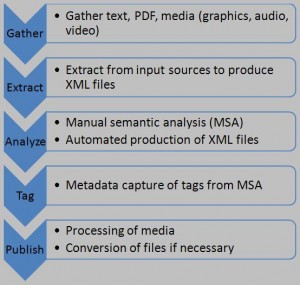
Figure 1: The publishing process (image created by Pam Gill)
(3) New Erudit Platform
Once the publishing process was described, an illustration of the new Erudit platform was revealed. Mr. Boucher indicated there is now increased support for journal articles through the Erudit Article 3.0 XML schema (see Figure 2). Further, there is support for additional scholarly genres such as books, proceedings, and even online courses (a recent request). It should be mentioned here that some of these other forms of documents are still in the experimental stages such as digitizing books. In addition, there is continued support for other XML input/output formats to ensure preservation and interoperability such as with the Open Archives Initiative (OAI), Google Scholar, and indexing databases.
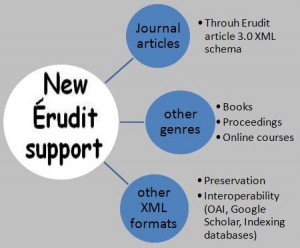
Figure 2: The new Erudit support system (image created by Pam Gill)
(4) Benefits
To conclude his presentation on Erudit, Mr. Boucher explained the advantages of incorporating such a system by mentioning particular benefits of interest:
- Purely Java-based
- User-friendly because they have a universal set of tools inside the applications which makes it easier for the support technicians to troubleshoot and work with
- Supports plug-ins and extensions
- All scholarly genres are supported
- The process is simpler to follow
- An increase in the quality of data is noted
- The decrease in production time is evident
- There is less software involved
Mr. Martin Boucher hinted that the beta version of Erudit was to release in Fall 2009.
Questions from the audience asked at Mr. Boucher’s session:
- Question: For the open access subscription of readership which consists of a vast collection, are statistics being collected? Answer: Not sure.
- Question: Will the beta version of the publishing platform be released to everyone for bug reporting, testing, or move internally? Answer: Not sure if there will be public access. But it is a good idea to try the beta platform.
- Question: Are you considering using the manuscript coverage for the Synergies launch? Answer: The new platform is creatively tight to what we are doing, and it is really close, with Synergies in mind.
- Question: In a production crisis, are journal editors with you until the end of the process? Answer: They are there at the beginning of the process. They give material, but we do our own quality assurance process and then we release to the journal, however it is our own control. Also, the editors cannot see the work in the process such as the metadata, thought we do exchange information by emails.
- Question: Has the provincial government been generous in funding? Answer: The journals had to publish in other platforms. There is a special grant for that. It is easier for us with that granting repository for pre-prints, documents or data section of the platforms which serve as an agent for them. Yet, Erudit is not considered by the government, although we are trying to get grants from the government. Currently to maintain the platform we only have money for basic management. In order to continue developing platforms (such as Synergy), to get support from the government is difficult.
- Question: How do the sales work for the two platforms? Answer: If you buy it, you will have all the content and access increases.
- Question: How is it passed to the publisher? Answer: The money goes to the journals, keep only a small amount for internal management since we are a non-profit society.
- Question: Could you describe the current workflow and time required to publish one article? Answer: It depends on the article. If we are publishing an article that has no fine grain XML tagging or it is text from a PDF, then it requires less time for us to get it out. It depends on the quality of the article and the associated graphics, tables, size etc. We publish an issue at a time. It takes say two days to get an article published.
Related Links
University of Montreal receives $14M for innovation (news article)
Contact the University of Montreal or the University of Laval libraries for more information on Erudit.
References
Boucher, M. (2009). The new erudit publishing platform. PKP Scholarly Publishing Conference 2009. Retrieved 2009-07-09, from http://pkp.sfu.ca/ocs/pkp/index.php/pkp2009/pkp2009/paper/view/182
July 10, 2009 2 Comments
PKP Open Archives Harvester for the Veterinarian Academic Community: The Session Blog
Date: July 9, 2009
Presenters: Astrid van Wesenbeeck and Martin van Luijt – Utrecht University

Photo taken at PKP 2009, with permission
Astrid van Wesenbeeck is Publishing Advisor for Igitur, Utrecht University Library
Martin van Luijt is the Head of Innovation and Development, Utrecht University Library
Abstract
Presentation:
Powerpoint presentation used with permission of Martin van Luijt
Quote: “We always want to work with our clients. The contributions from our users are very important to us.”
Session Overview
The University Library is 425 years old this year. While they are not scientists or students, they have a mission to provide services that meet the needs of their clients. Omega-integrated searches bring in all metadata and indexes it from publishers and open access areas.
Features discussed included the institutional repository, digitization and journals [mostly open and digital, total about 10 000 digitized archives].
Virtual Knowledge Centers [see related link below]
– this is the area of their most recent work
– shifts knowledge sharing from library to centers
– see slides of this presentation for more detail
The Problem They Saw:
We all have open access repositories now. How do you find what you need? There are too many repositories for a researcher to find information.
The Scenario
They chose to address this problem by targeting the needs of a specific group of users. The motivation – a one-stop shop for users and increased visibility for scientists.
The Solution:
Build an open-access subject repository, targeted at veterinarians, containing the content of at least 5 high-profile veterinarian institutions and meeting other selected standards.
It was organized by cooperating to create a project board and a project team consisting of knowledge specialists and other essential people. The user interface was shaped by the users.
Their Findings:
Searching was not sufficient, the repository content, to use his word, “Ouch!” Metadata quality varied wildly, relevant material was not discernible, non-accessible content existed and there were low quantities in repositories.
Ingredients Needed:
A harvester to fetch content from open archives.
Ingredients Needed 2:
Fetch more content from many more archives, filter it and put it into records and entries through a harvester, then normalize each archive, and put it through a 2000+ keyword filter. This resulted in 700,000+ objects.
Ingredients 3:
Use the harvester, filter it and develop a search engine and finally, a user interface.
Problem: The users wanted a search history and pushed them into dreaming up a way of doing that without a login. As designers, they did not want or need that login, but at first saw no way around a login in order to connect the history to the user. Further discussion revealed that the users did not have a problem with a system where the history did not follow them from computer to computer. A surprise to the designers, but it allowed for a login-free system.
Results: Much better research. Connected Repositories: Cornell, DOAJ, Glasgow, Ugitur, etc.
Workshop Discussion and Questions:
1. How do you design an intelligent filter for searches? [gentleman also working to design a similar search engine] Re-harvesting occurs every night with the PKP harvester rerunning objects through the filter. Incremental harvests are quick. Full harvests take a long time, a couple weeks, so they try not to do them.
2. Do you use the PKP harvester and normalization tools in PKP? We started, but found that we needed to do more and produced a tool outside the harvester.
3. <Question not heard> It was the goal to find more partners to build the tool and its features. We failed. In the evaluation phase, we will decide if this is the right moment to roll out this tool. From a technical viewpoint, it is too early. We may need 1 to 2 years to fill the repositories. If you are interested in starting your own, we would be delighted to talk to you.
4. I’m interested in developing a journal. Of all your repositories, do you use persistent identifiers? How do I know that years down the road I will still find these things? Is anyone interested in developing image repositories? There is a Netherlands initiative to build a repository with persistent identifiers. What about image repositories? No. There are image platforms.
5. Attendee comment: I’m from the UK. If valuable, we’ll have to fight to protect these systems because of budget cuts and the publishers fighting. So, to keep value, we’ll have to convince government about it.
Related Links:
OAI6 talk in Virtulal Knowledge Centers
NARCIS, a dutch repository of theses
First Monday article
Posted by Jim Batchelor, time, date
July 9, 2009 Comments Off on PKP Open Archives Harvester for the Veterinarian Academic Community: The Session Blog

